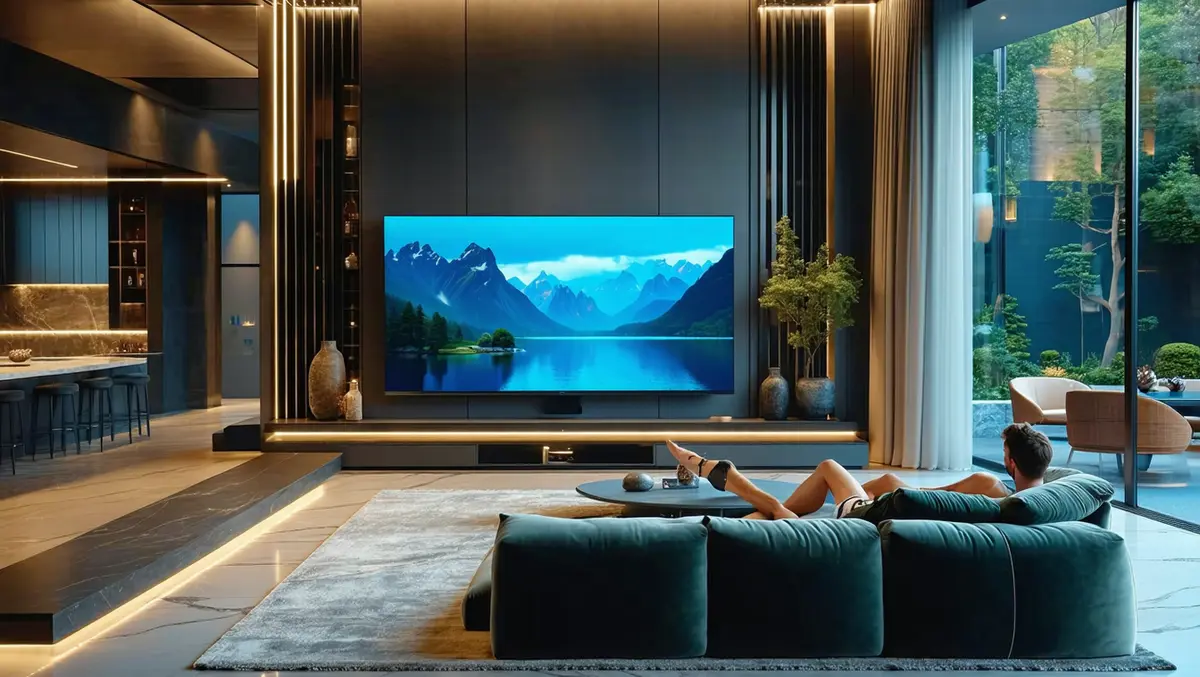
Australians favour bigger TVs as tech advances & costs drop
New research from Kogan reveals Australians are buying significantly larger televisions as technology advances and costs decrease.
Television screens have grown by 54% in the largest available models since 2015, with size offerings expanding from 65 inches to 100 inches by 2024. Director of Purchasing at Kogan, Arun Shah, attributes this trend to advancements in both manufacturing and display technology. "Advancements in manufacturing technology have significantly reduced production costs, making TVs more affordable for consumers. Additionally, improvements in display technology mean that larger screens showcase enhanced picture quality far better, which has driven demand for bigger sizes," Shah explains.
In 2015, the most substantial TVs available were 65 inches, largely spurred on by the emergence of 4K Ultra High Definition options. Shah notes, "The shift in TV size preference is striking. Over the past nine years, the most popular screen size has increased by 56%, almost doubling in size. In 2015, 65 inches was the largest screen available, but today, we're seeing TVs as large as 100 inches. That same year marked the rise of 4K Ultra High Definition TVs, which, despite their premium price range of USD $4,700 to USD $7,000, made the 65-inch model an exciting option for many households."
The average television in Australian homes was once 32 inches in 2015. Now, the typical purchase is a 50-inch screen, marking a 56% increase. Shah links this growth to improved affordability, stating, "What's even more telling is that the average TV size in Australian homes has grown significantly. In 2015, the typical purchase was a 32-inch TV, but today, most households own a 50-inch screen—a 56% increase." He anticipates this trend continuing as technology progresses while maintaining reasonable price points. "With larger screens becoming increasingly affordable, we expect the average TV size in Australian homes to continue growing in the coming years as technology advances and prices remain accessible," Shah says.
From 2017 to 2019, Australians bought 55-inch TVs most often, likely influenced by the availability of 4K technology and the growing use of streaming services. "From 2017 to 2019, the average TV size purchased was 55 inches, the largest size recorded during the years we analysed," says Shah. "This was likely driven by the widespread availability of 4K Ultra High Definition TVs and the growing popularity of streaming services. As people began to realise how much a higher-quality TV could enhance their viewing experience, the 55-inch size became an attractive option, especially since it was relatively affordable for many households."
In 2020, a shift occurred towards smaller 32-inch TVs, possibly due to economic factors. "By 2020, we saw a shift to smaller screen sizes, with 32-inch TVs being the most commonly purchased. This change might be attributed to rising living costs, which may have led Australians to opt for more budget-friendly options and smaller TVs tend to fit that category," Shah remarks.
The landscape shifted again post-COVID-19, with larger TV purchases climbing as consumers invested in home entertainment. "Post-COVID-19, however, we've seen a renewed increase in larger TV purchases. With many people spending more time at home, Australians began investing in home technology, including higher-quality and larger TVs," Shah explains.
The assortment of streaming services has fostered an in-home cinematic experience, further fueling demand for larger televisions. Shah elaborates, "The proliferation of streaming services, along with the advancement of at-home entertainment systems, meant that consumers could create an at-home cinematic experience. Netflix and Stan launched in Australia in 2015, with other streaming services following soon after. We're immersing ourselves in our living rooms thanks to the availability of high-quality content at our fingertips. What was once considered to be a luxury, the cinematic home experience is now a household standard."
Looking ahead, Shah foresees continued growth for Ultra High Definition and larger TVs. "Our research indicates that Australians are trending toward larger TV screens, with many opting for Ultra High Definition models to improve their viewing experience. TVs in the 40-inch to 50-inch range have become more affordable, which suggests we could see a continued trend toward larger screens over the next nine years," he says.
For consumers purchasing a TV, considering room size and viewing distance is crucial. Shah advises, "When choosing a TV, it's essential to consider both the size of your room and your viewing habits. While bigger screens can offer a more immersive experience, the key is to ensure you're sitting at the right distance for the size of the TV. For example, for a 50-inch screen, you'll want to sit about 1.5 meters away for the best viewing experience."
Additionally, technological preferences like LED, QLED, or OLED should align with consumers' desires. "It's also worth thinking about the type of panel you want. LED TVs are often the most affordable, but QLED, Mini-LED or OLED technologies might be more suitable for richer colours and better contrast, depending on your budget and needs. And if you're a fan of streaming, a smart TV that integrates with platforms like Google TV or Roku can simplify your entertainment experience," he notes.


